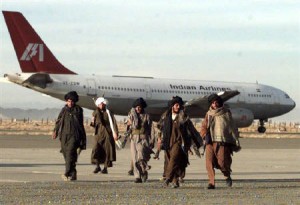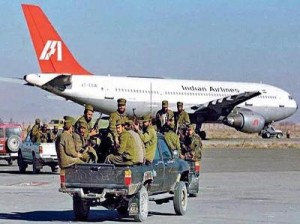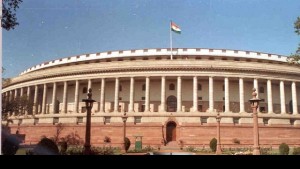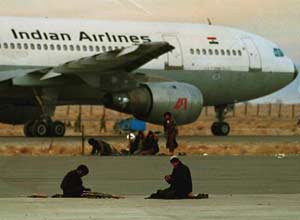In this blog post, Pranav Rudresh, Student of Lloyd Law College, Greater Noida and a Diploma in Entrepreneurship Administration and Business Laws from NUJS, Kolkata, writes about one of the recent laws amended by the parliament known as the Anti-Hijacking (Amendment) Bill, 2016.
Introduction
In 1982, an act was passed by the Parliament of India for suppression of unlawful seizure of aircraft’s registered in India[1] and was known as the Anti-Hijacking Act, 1982. According to the act, whoever on board aircraft in flight attempts by force or threat and intends to control the aircraft for unlawful purposes shall be charged with the offense to commit a hijack. The punishment under such charge, if proved, was life imprisonment and fine.
In December 1999, an Indian Airlines aircraft popularly known as IC-814 was hijacked while traveling on its way back to Delhi from Kathmandu, Nepal. Despite several attempts of negotiation with the hijackers, the Indian government was forced to release three terrorist namely Maulana Masood Azhar, Ahmed Saeed Sheikh and Mushtaq Ahmed Zargar. One of the passengers was killed while several others were injured. Later the case was investigated by the Central Bureau of Investigation (CBI), which charged 10 people, of which seven people were absconding including the 5 hijackers. The 3 people who were charged with helping the hijackers were awarded life imprisonment.
Yusuf Nepali, who was among the three people charged with helping the hijackers was awarded life imprisonment, the CBI had however moved the Punjab-Haryana high court seeking the death penalty for him, which was rejected by the court on grounds of his prolonged custody. Nepali was released from jail in April 2014 and later claimed that he was not a part of hijacking although CBI had proved his active participation in helping the hijackers.In December 1999, an Indian Airlines aircraft popularly known as IC-814 was hijacked while traveling on its way back to Delhi from Kathmandu, Nepal.
 Despite several attempts of negotiation with the hijackers, the Indian government was forced to release three terrorist namely Maulana Masood Azhar, Ahmed Saeed Sheikh and Mushtaq Ahmed Zargar. One of the passengers was killed while several others were injured. Later the case was investigated by the Central Bureau of Investigation (CBI), which charged ten people, of which seven people were absconding including the five hijackers. The three people who were charged with helping the hijackers were awarded life imprisonment.
Despite several attempts of negotiation with the hijackers, the Indian government was forced to release three terrorist namely Maulana Masood Azhar, Ahmed Saeed Sheikh and Mushtaq Ahmed Zargar. One of the passengers was killed while several others were injured. Later the case was investigated by the Central Bureau of Investigation (CBI), which charged ten people, of which seven people were absconding including the five hijackers. The three people who were charged with helping the hijackers were awarded life imprisonment.
All these events led to the question whether the death penalty should be imposed upon a person involved or related with hijacking. The bill was last amended in the year 1994, A few amendments were planned in 2010 but were unsuccessful in implementing.
The Anti-hijacking Act, 2016
Reforms in the Anti-hijacking Act, 1982 were presented, and first bought up in 2010 however the amendments couldn’t see much of daylight. It was this year in the month of May when the Anti-hijacking Amendment Act was passed in both houses successfully as well as it received the assent of the President. The Anti-hijacking Act, 2016 has been divided into three chapters mainly: The first chapter deals with the definition of hijacking and other things such as aircraft, hostage, military aircraft, etc. The second chapter deals with the punishment for the accused. Notably, the provisions of the Code of Criminal Procedure, 1973 has been enabled. Chapter 2 also describes the powers of the central government. It also defines the jurisdiction of the law. The third chapter contains the miscellaneous provisions such as the power to treat certain aircraft to be registered in Convention countries[2].The persons acting in good faith and doing anything required under their duties under this Act are protected under this Act against any suit.
The new bill is with effect to the Hague Convention, 1971[3]and the Beijing Protocol, 2010[4]. Some of the important modifications in the new bill are:
- Change in definition of the word “hijacking”: One of the most important amendments that have been mentioned in the Act is in Section 3; which changes the definition of the word “hijacking.” It is for the first time that in this bill the term “technological means” has been used. The law now defines hijacking as “Whoever unlawfully and intentionally seizes or exercises control of an aircraft in service by force or threat thereof, or by coercion, or by any other form of intimidation, or by any technological means, commits the offense of hijacking”[5]. In the law of 1982, the term technological means has not been used. The Section 3(1) of the anti-hijacking act, 1982 defined hijacking as “Whoever onboard an aircraft in flight, unlawfully, by force or threat of force or by any other form of intimidation, seizes or exercises control of that aircraft, commits the offense of hijacking”.
- Provision of capital punishment and Role of Central Government: Another notable amendment in the Anti-hijacking Amendment Act is the introduction of capital punishment. It has been mentioned in Section 4 of the Amendment Act that in case of hijack, if the accused has conducted any act of violence which may result in death of any of the passengers or crew members and the security personnel or any such other person not involved in the offence present in the aircraft, he may be liable for death penalty.The accused will still be charged with life imprisonment and fine, along with confiscation of his movable and immovable properties in case the accused is charged only of hijack. It is to be noted that Section 5 of the Act of 1982 had provisions of the death penalty for the accused however only in case killing of hostages such as passengers and crew members directly. The Section 6(2) of the Amendment Act also empowers the Central Government for investigation, arrest, and prosecution of any officer of the Central Government or National Investigation Agency (NIA) in the case of suspicion. Section 20 of the Anti-hijacking Amendment Act empowers the Central Government to lay down new rules if required and present before both the Houses of Parliament for discussion and approval before implementation while the house is in session. If the houses disapprove the presented rules, the law shall remain unaffected.

- Change of jurisdiction of the law to “Universal”: Another important amendment included in the Anti-hijacking Act, 2016 is the change of jurisdiction of the law.The law now covers provisions against highjacking of aircraft’s registered in India or consisting of Indian passengers or highjack committed by an Indian anywhere in the world. According to the law, if the hijacker is a resident of India, or if the hijacked aircraft is registered in India or if any foreign registered aircraft lands in India with the alleged offender still on board or when the aircraft is hijacked anywhere in the world, and an Indian citizen is on board, proceedings under Anti-hijacking Act may be applicable upon the hijacker. It has been mentioned in Section 7 of the amended act.
Conclusion
The Anti-hijacking Amendment Act, 2016 covers a considerable amount of improvements compared to the act of 1982 or the amendments made in 1994. With the implementation of this act, the Indian legislation surely tightens its stand against incidents related to hijacking as it brings both technology and manpower to work together more vigilantly for the safety of passengers. India has witnessed 19 highjacks so far and every time it has cost us something. Implementation of this law will impact India’s strong stand against incidents like highjacking. There are still certain points to be covered to make this law even stronger such as to allow the security forces to shoot down an aircraft which may be used as a missile or the power to concerned authorities or security forces to prevent take off for suspected flights.The new act has also been framed by the Beijing Protocol, 2010 which makes it noted globally as many countries frame their civil aviation laws by this protocol.
We can only hope that we don’t need to enforce these laws on someone shortly.
[divider]
References:
[1] Aircraft registered in India means any aircraft apart from military and police or custom services which at the time being have been registered in the jurisdiction of India. (Section 1(3) Anti-hijacking Act, 1982)
[2] Countries that have agreed and accepted the Hague Convention
[3] The Convention for the Suppression of Unlawful Seizure of Aircraft signed at The Hague on the 16th of December, 1970
[4]The Convention held at Beijing for Suppression of Unlawful Acts Relating to International Civil Aviation is a treaty by which nations agreed to criminalize certain terrorist actions against civil aviation in September 2010.
[5] Source: http://www.indiacode.nic.in/acts-in-pdf/2016/201630.pdf
 Serato DJ Crack 2025Serato DJ PRO Crack
Serato DJ Crack 2025Serato DJ PRO Crack











 Allow notifications
Allow notifications



